How can we get more people in cities tested faster outside of hospitals and doctors' offices?
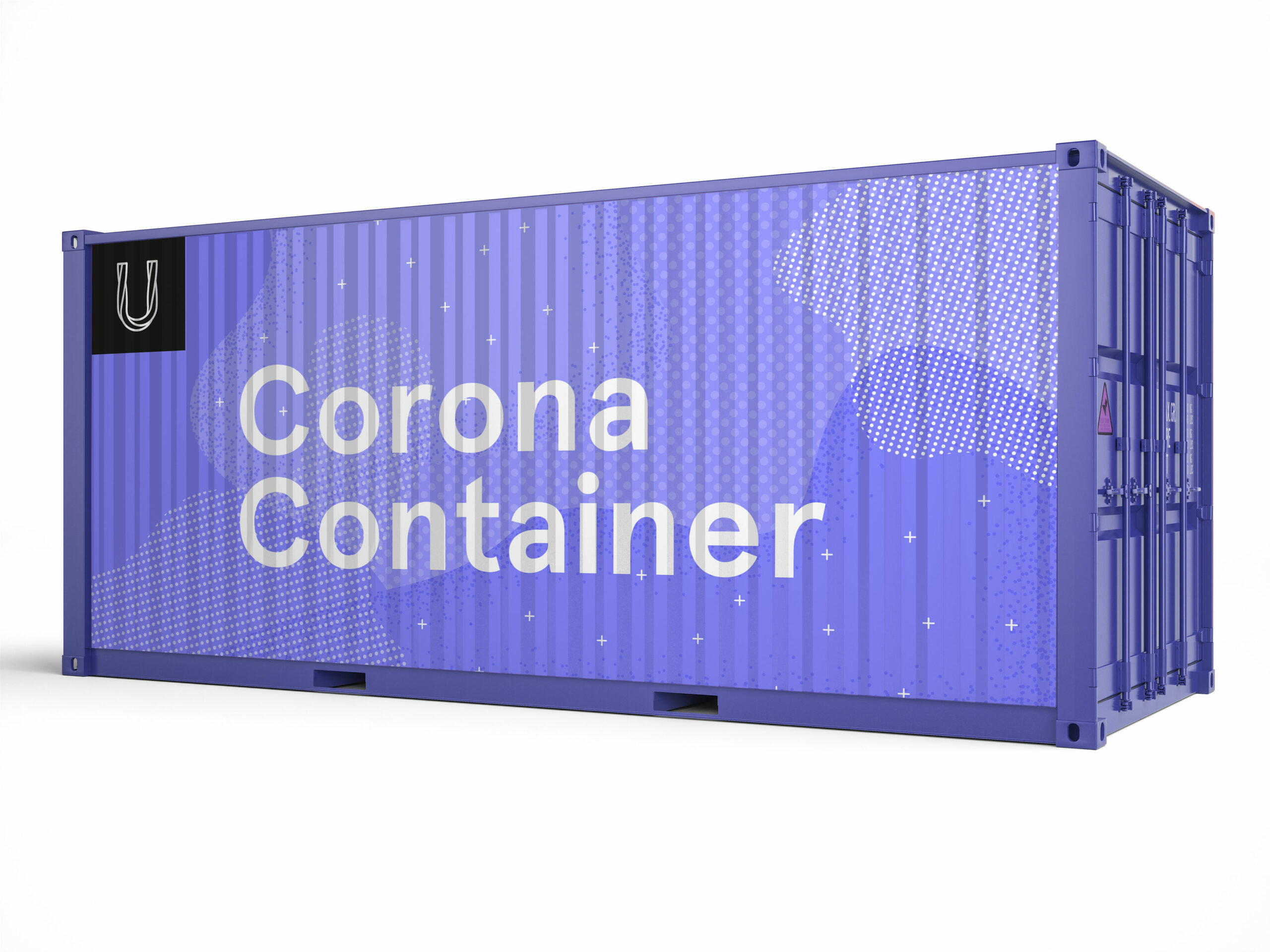
While it’s hard to think past the unspeakable drama playing out on the frontlines of the coronavirus pandemic, people around the world can’t help but ponder what comes next.
How do we get back to normal? How do we get the economy moving again?
One thing we know for sure, is that mass testing of one kind or another will have to be part of the equation, if we are going to figure out where this virus is and where it isn’t. And the sooner we can map this out, the sooner we can get back on track.
The Bump team set out to tackle this problem with a design solution: a low-cost system that any city or company in the world could remix to make work for them. Olivier Van Horenbeeck and his team at Growth Inc have also joined our passionate quest to find the right people and organisations in Belgium and beyond to make this a reality.
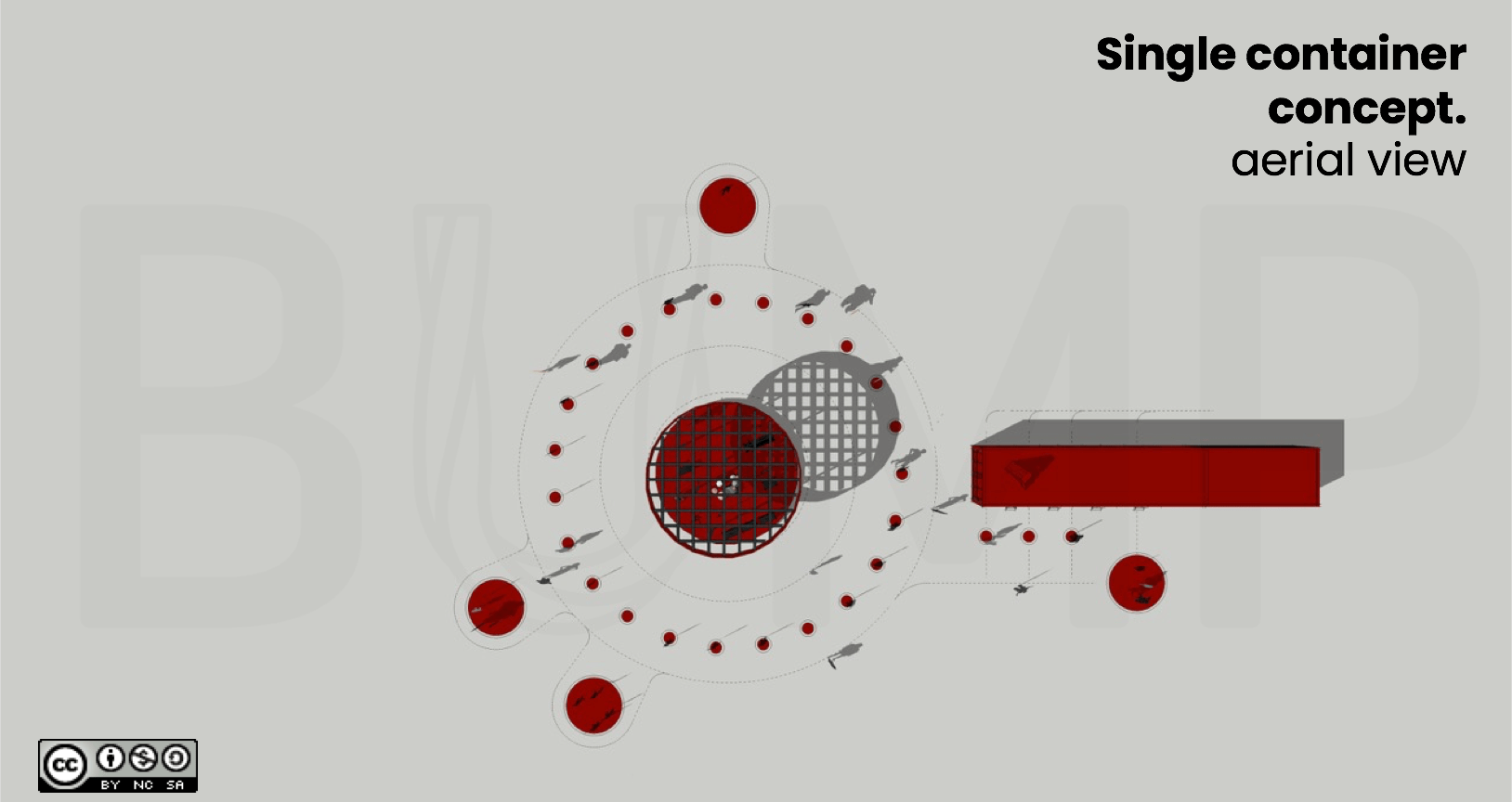
The Corona Container system is a plan to implement mass testing for coronavirus using the City of Antwerp, Belgium as a test case.
It has been designed, however, to be reproduced in a non-commercial context in any city with large public spaces, using readily available low-cost materials. Here are the ingredients:
1) Repurposed shipping container.
2) Use of voting registries/neighbourhood population information to invite people to timed testing slots in an open public space near their homes.
3) Clearly marked tracks for families and individuals with safe distancing, limited interaction with others and minimal waiting times.
4) Trained volunteers to administer minimally-invasive rapid tests.
5) An injection of culture to make this first return to public life memorable for the right reasons.
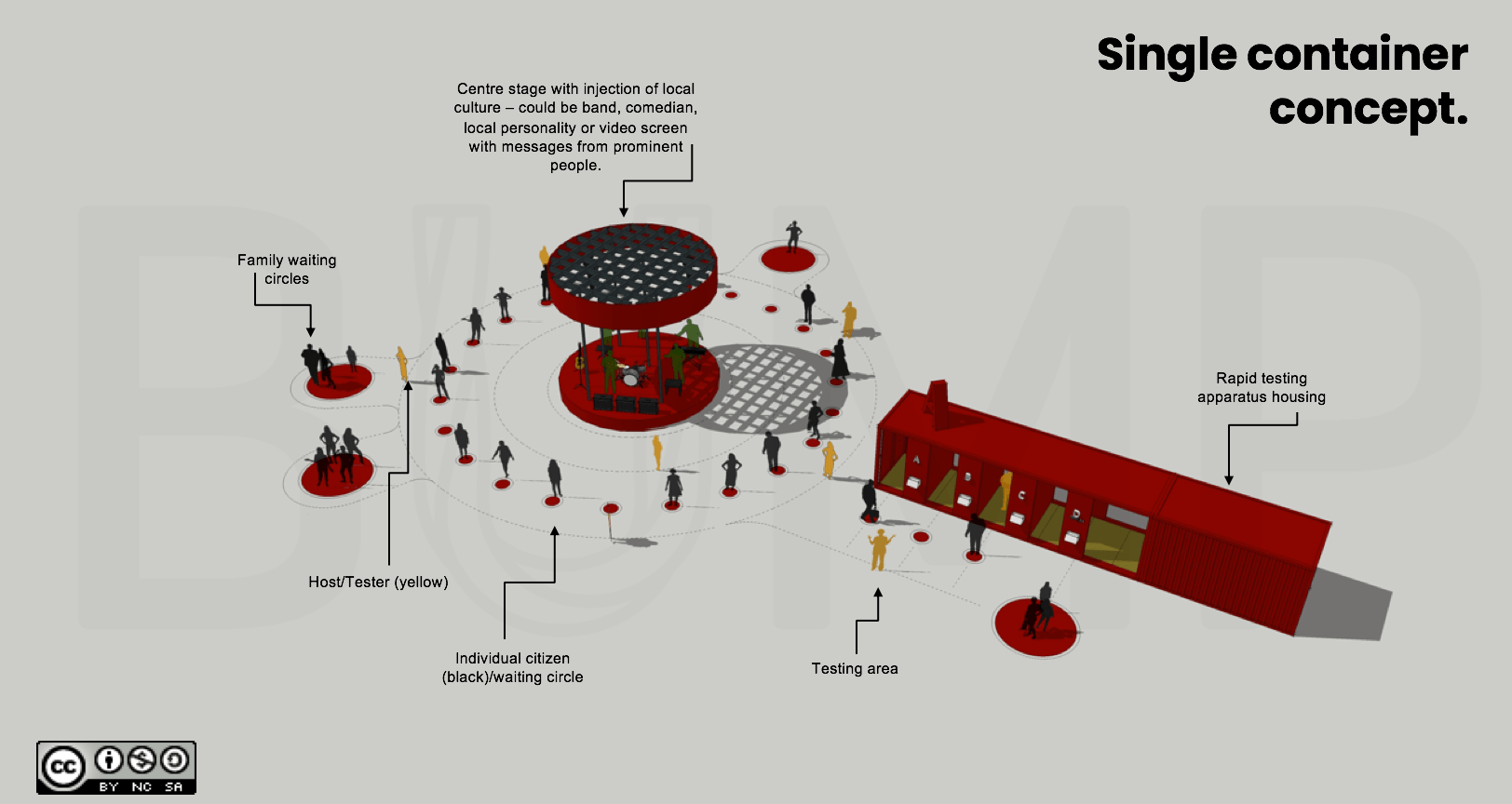
Here’s a first stab at the flow for a family of 2-6 people:
Notification: Head of household notified by email of timed slot and site and provided full overview of testing choreography including visuals of the site.
Arrival at location: Family is greeted by one of several hosts (pictured in yellow) at various sides of site. Host again explains the flow (nice to have: all staff’s protective clothing and mask are made less clinical in appearance by adding for example, a common logo or inspirational slogan). The family shows ID and is registered by the host on a tablet.
Entering the queue: The host guides the family to an empty waiting circle.
The waiting experience: Throughout the max thirty-minute waiting time, musicians, magicians and/or other local performers are perched on a central platform at a safe distance. The platform could also house a large screen with video messages from prominent figures from the city.
The test: The host leads family members to a final waiting circle and denotes the standing area and standing position for the individual to prepare to be tested. The individual enters the testing container. The fluid/blood sample is collected and each family exits and is reminded to expect their results by email.
Individuals would have a similar experience, but would be led by hosts to smaller individual waiting circles.
In the below image you can see how hosts and testers (pictured in yellow) move safely along their own clearly marked tracks to minimise confusion.
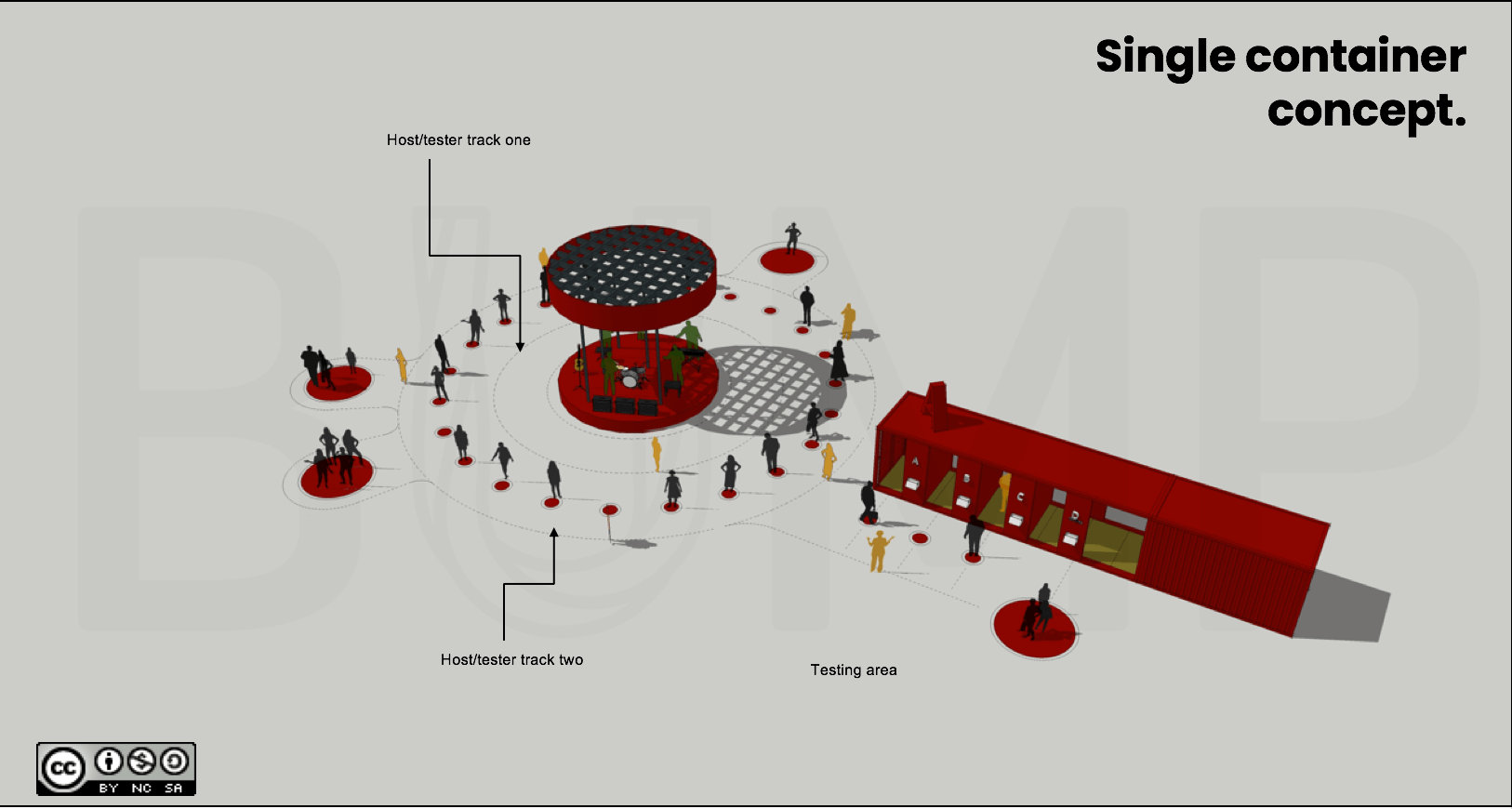
Our conservative calculation is that one container could safely test 48 people per hour. In a 7-hour shift, that adds up to 336 people per day, which means over the course of 20 working days (one month) a one-container operation can test 6,720 people.
Still with us?
With this math, we worked out how many containers we would need to test Antwerp’s most populous neighbourhoods, as shown in the below image. Working at a fairly slow and steady pace, we could test nearly 189,000 people across the city using 35 containers.

Capacity can be increased by adding additional testing units so that more citizens can be served from a single location at a faster pace. Could doubling or tripling the containers on one city square double or triple capacity?
Maybe. But we would only know if we could safely do that after testing the system to see if it can manage groups that large without creating a crowd of people standing too close to each other.
We do think though, that by adding a two- or three-container setup where we have enough surface area to safely do so, that we could comfortably test 300,000 or more people in Antwerp proper over the course of 20 working days.
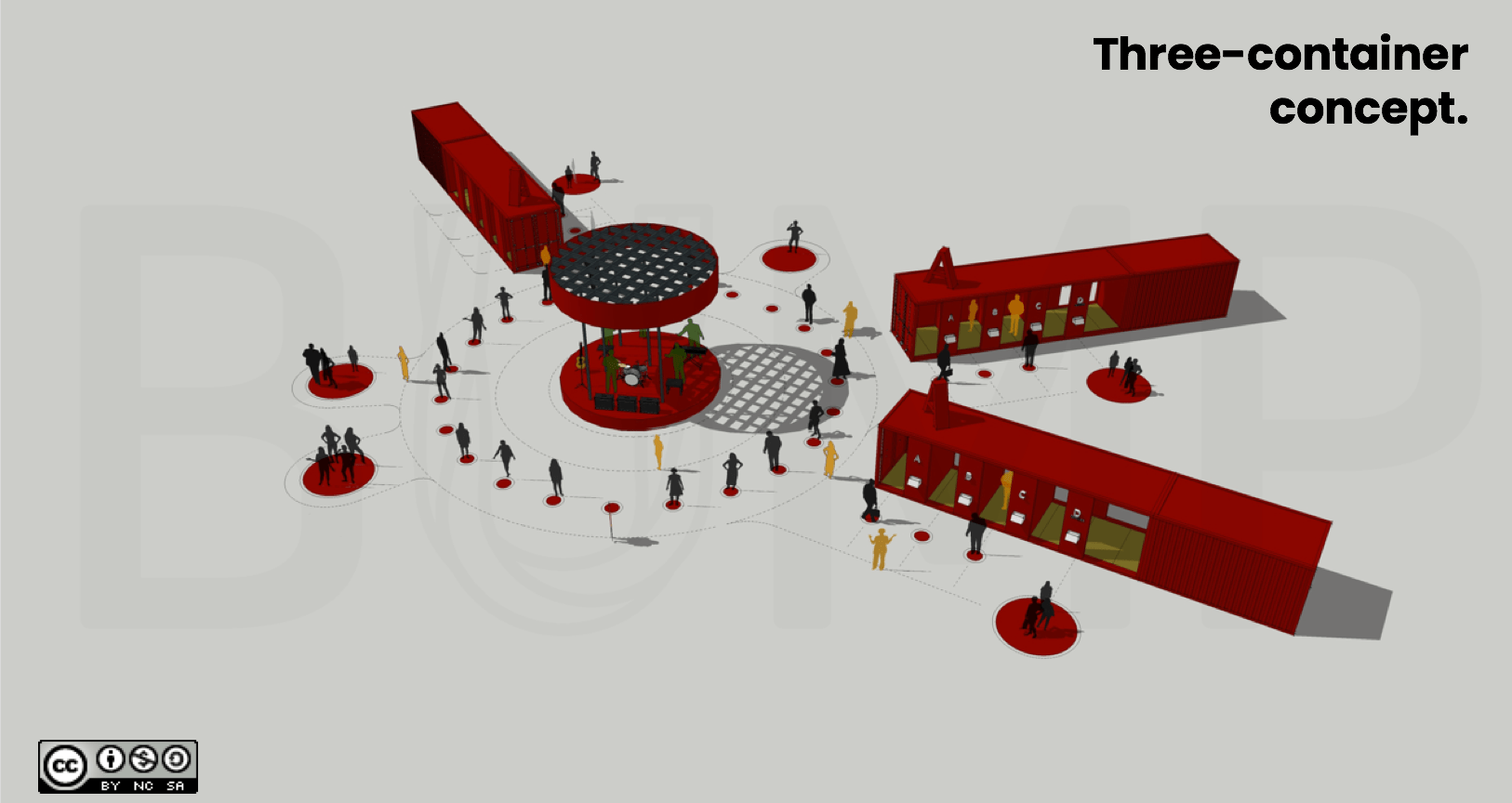
With the testing area, we considered the need to balance the following:
Safety – to ensure the testing area does not facilitate the spread of the virus.
Privacy – the need for citizens, especially families with young children to undergo what may be a short but traumatic nasal swab.
Cost/availability – the need to use materials that can be cheaply an easily sourced anywhere in the world.
Because the virus can live on metal surfaces for several days, ideally the containers would have built-in disinfection systems that activate after every use. This may be a hurdle in some areas more than others. We continue to consider alternative container configurations to strike the right balance of the above three factors.
Will we test for immunity or for the virus itself? When will mass testing be available? What are the privacy implications?
These are just some of the open questions we need answers to. This system is far from perfect and will need several iterations with healthcare staff, IT professionals and public health officials to make sure this works wherever it is tried.
Bump and Growth Inc are actively pursuing partnerships to refine the concept and make some version of it happen.
We are not so much concerned with ensuring it is THIS system that is used, but rather that we all put our heads together to figure out how we can make mass testing feasible in the safest and fastest possible way, by thinking outside the usual modalities of hospitals, GP offices and drive-up schemes.
In short, we hope this will start kickstart a creative conversation about how to move forward and also help us be prepared should a new wave of infections arrive next winter.
We have an opportunity to make this a moment of collective reawakening, a celebration of a city’s resilience in the face of an unexpected threat. If we think this through, we can deliver safe, fast testing in a way that will deliver high compliance and a much needed morale boost for an ailing city.
We are making this available under the “Attribution-NonCommercial-ShareAlike” Creative Commons License (CC BY-NC-SA) which lets others remix, adapt, and build upon Bump’s work non-commercially, as long as they credit Bump and licence their new creations under the identical terms.
Our simple ask: It’s easy to point out obstacles and problems in a concept like this, harder to come up with ways to overcome them.
We hope you’ll focus on the latter and bring hacks to make this better OR, a completely new approach that solves the problem at hand. And we hope you’ll share it with the world.
To discuss, reach out to any of the below team members:
Brett Kobie, Strategy & Creative Lead (brettkobie@bump.nu)
Koen Huyghe, Co-founder & Design Lead (koen@bump.nu)
Arnoud Schoofs, Co-founder & Innovation Lead (arnoud@bump.nu)
Olivier Van Horenbeeck, Managing Partner, Growth_Inc. (olivier@growth-inc.be)
Good news. So are we.